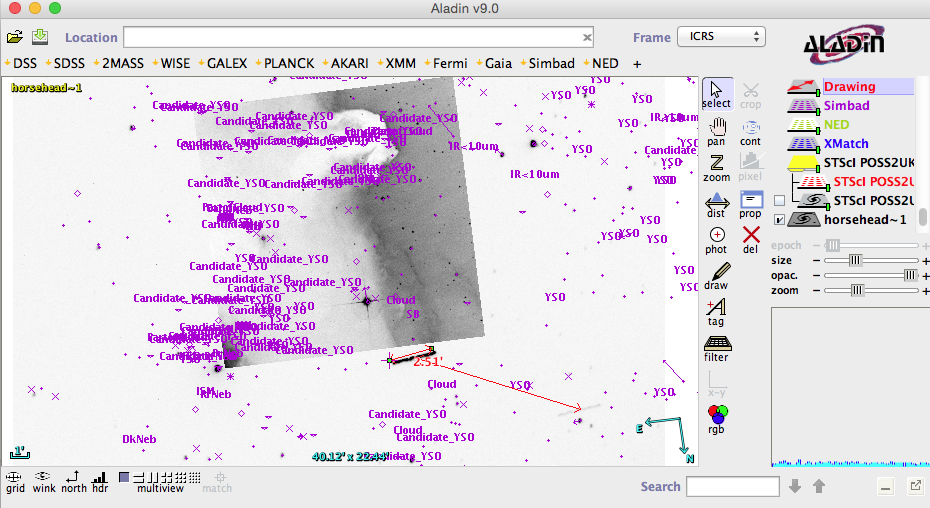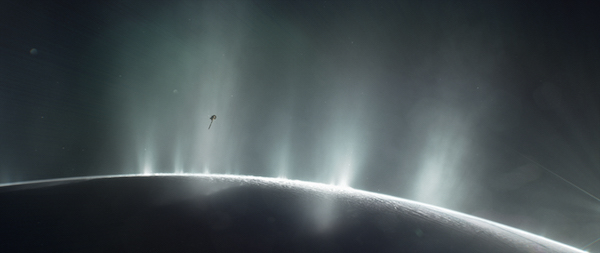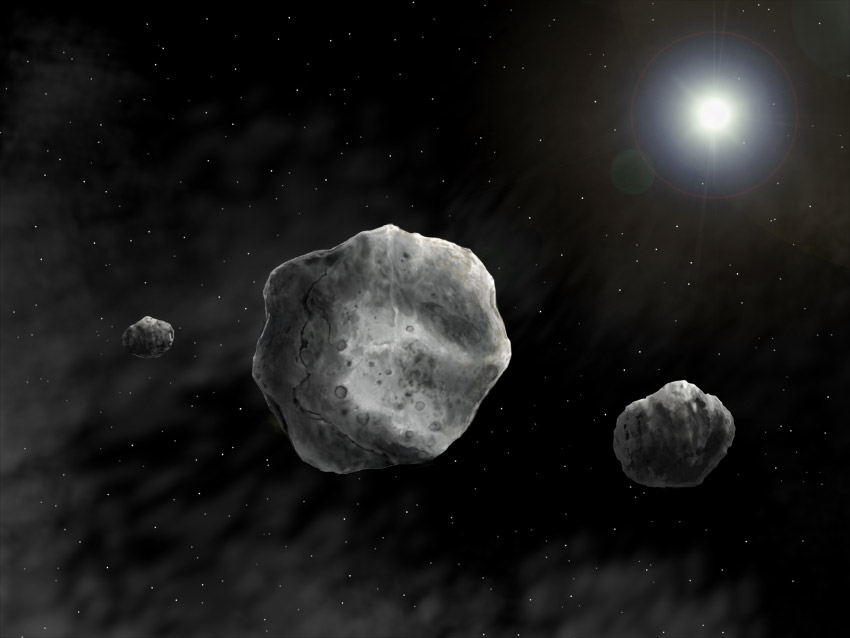Discovery
- All
- Adaptive Optics
- Asteroids
- ATA
- Comet
- Conference
- Corot
- Discovery
- Discussion
- Diversity
- ELTs
- Exo-Planets
- FIRST
- Galileoscope
- Group
- Hawaii
- HD 10180
- History
- HST
- Io
- IYA
- Keck
- Kepler
- Mars
- Mauna Kea
- Mission
- Moon
- Multiple Exoplanet Systems
- Observations
- Personal
- Seminar
- SETI Institute
- Space Mission
- Thoughts
- Titan
- TMT
- UC-Berkeley
- Uncategorized
- Unistellar
- VLT
- Volcanism
Intriguing pair of satellites caught with the eVscope

If you often look at the evening dark sky in a clear area far away from the city, you have probably seen a speck of light which moves with respect to the star, that's probably a distant satellite that shines because it reflects the light of the sun at high altitude. According to NASA's Orbital Debris Program office, there are an about 21,000 large debris (>10 cm) and satellites orbiting around Earth right now, so much more than you can see with your naked eye.
The eVscope is designed to pinpoint and image Deep Sky Objects (nebulae, galaxies), but we have already shown its... read more ❯
Another smoking gun in the search for life in Enceladus’ ocean

Today, NASA-funded scientists announced a major new step in the search for life on Enceladus, Saturn’s sixth-largest moon, thanks to new data collected by the NASA/ESA Cassini mission.
Enceladus has attracted a lot of interest because it has an active pole that spews jets of material into outer space. During its last flyby over that pole, an instrument on board the Cassini spacecraft detected the presence of a biomarker—molecular hydrogen. This suggests that the ocean we know lies beneath the moon’s surface could indeed contain an ecosystem similar to the ones we find in deep-sea hydrothermal vents on Earth.
[caption id="attachment_1938" align="aligncenter"... read more ❯
Proxima Centauri b: Have we just found Earth’s cousin right on our doorstep?
What began as a tantalizing rumor has just become an astonishing fact. Today a group of thirty-one scientists, led by Guillem Anglada-Escude at the Queen Mary University of London, UK, announced the discovery of a terrestrial exoplanet orbiting Proxima Centauri. The discovery of this planet, Proxima Centauri b, is a huge breakthrough not just for astronomers but for all of us. Here’s why.
This artist’s impression shows a view of the surface of the planet Proxima b orbiting the red dwarf star Proxima Centauri, the closest star to the Solar System. The double star Alpha Centauri AB... read more ❯
First Discovery Of An Earth-Sized Planet In The Habitable Zone
Source: SETI Institute Press-release
MOUNTAIN VIEW, CA – For the first time, an Earth-sized planet has been found in the habitable zone of its star. This discovery not only proves the existence of worlds that might be similar to our own, but will undoubtedly shape future investigations of exoplanets that could have terrestrial surface environments.
The new-found body, orbiting the red dwarf star Kepler-186 and designated Kepler-186f, is the fifth – and outermost – world to be discovered in this system. The... read more ❯
Surprising discovery: a ring around an asteroid
Some may say that our universe is full of beauty, others argue that it is our solar system that surprises us the most, but ultimately I will say that it is the world of small solar system bodies which is strikingly full of diversity. Today's announcement of the discovery of rings around the Centaur Chariklo by an international team of astronomers is a vivid proof that small solar system bodies have not yet revealed all their secrets.
My recent work has made me realize that asteroids (also called small solar system bodies or minor planets) are in fact real mini-geological worlds.... read more ❯
Asteroid Minerva finds its magical weapons in the sky

The International Astronomical Union has chosen the names Aegis and Gorgoneion for the two moons of the asteroid (93) Minerva. My team discovered the small moons in 2009 using the W. M. Keck Telescope and its adaptive optics system. We proposed the names after receiving input from the public.
Astronomer J.C. Watson discovered (93) Minerva, a large 150 km diameter asteroid located in the main belt, on Aug. 24, 1867... read more ❯
Take a break today, read this poem "Across the Dark, the Pioneers"
If you need a break today, you should read this poem by G. Landis published recently in the Starship Century Book. Truly inspiring!
Across the Dark, the Pioneers
Geoffrey A. Landis
The ships first sent across the dark ocean,
pebbles flung into the universe vast,
rocket-propelled, a flash of motion
past Jupiter, Saturn, the Kuiper cloud:
they glide outward to the stars
now silent, dead, pitted by dust
a voyage of a hundred thousand years:
the Voyagers and Pioneers.
The next probes sent out across the dark
the swiftest ships yet made by man
ion-engined craft, faster... read more ❯
The Russian Meteor and Lessons Learned on Meteor Impacts
Almost 12h after the event, it is time to gather my notes on the Russian meteor event (#RussianMeteor) and my thoughts on this impact and those which may come soon.
What do we know?
(I collected these pieces of information from numerous of my colleagues. Thanks)
Today February 15 2013 a meteor exploded over the region of Chelyabinsk, Russia near the Southern Ural Mountains at 9:20:26 am LT (03:20:26 UTC). The explosion occurred at an altitude of ~15-20 km and the bolide impact speed was estimated to ~20 km/s with a... read more ❯
Another fireball on Jupiter?
An amateur astronomer reported the visual detection of a fireball on Jupiter at 11:35 UT (September 10 2012) last night. It was confirmed on a video recorded from Texas. This is the 6th impact of Jupiter detected so far.
Astronomer Dan Petersen saw today September 10 2012 at 11:35 UT a bright flash on Jupiter which lasted 1 or 2 seconds. It estimated its... read more ❯
Searching for Fragments of the Sutter's Mill Meteorite
An update about the Sutter's Mill Meteorite that I mentioned yesterday. A few hours ago, I saw the pieces that Peter Jenniskens brought at the SETI Institute. I am not a meteorite expert but they indeed look like a carbonaceous chondrite meteorite. The fragments are black, with tiny white flecks scattered through the interior. On the surface, one can see black coating due to the heating during the passage through the Earth atmosphere.
While watching them, I had this unreal... read more ❯